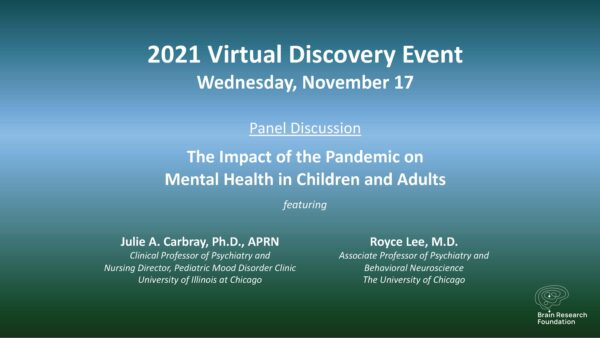Three expert panelists met to discuss the field of Autism being both their specialist areas and their passion. Then, they set out to examine current risk factors, research, and treatments.
Dr. Ted Abel from the University of Iowa, a long-time member of the BRF review committee involved in reviewing and selecting the BRF Funds, and Dr. Ed Cook from the University of Illinois in Chicago, one of BRF ‘s greatest success stories, were two of the three contributors. In the 1990’s Dr. Cook received a few seed grants totalling less than $50 000. However, with the data from these grants, he was able to obtain almost $15 00000 to continue his research.
Dr. Suma Jacob, whom Dr. Cook trained at the University of Chicago, was also a contributing panellist in this discussion.
Dr. Cook opened the discussion by defining the meaning of a spectrum. He explained that a spectrum means no clear-cut point at which the disorder begins and ends. He referred to Autism as a combination of two significant problems: difficulty in social communication and restriction of repetitive behaviors.
One of the earliest signs identified in a baby is a lack of eye contact with its primary caregiver. In an adult, one of the signs is displaying normal cognitive functioning but having trouble connecting subtleties with language and nonverbal communication.
The child who has problems with restrictive behaviors will become upset if he cannot follow routines. For example, he will also focus on the spinning wheels when playing with a toy truck as opposed to a child who would play with a toy truck by moving it around an area.
Dr. Suma Jacobs spoke about the child’s developmental history and behaviors when making a diagnosis. She mentioned that there are standardized tests as well as interviews that assist in determining the diagnosis. She said a significant advance in getting better at this occurred in early childhood.
The latest statistics indicate that one in fifty-four children is diagnosed as Autistic. Dr. Ted Able emphasized the importance of early identification. This is happening in early infancy increasingly.
Some Autistic people perform better in specific jobs. While there is no silver bullet cure, treatments such as Cognitive Behavioral Therapy and Behavioral Management Therapy require highly time-intensive work. They involve analysis to understand why individuals do what they do in response to stimuli. In addition, these treatments are often in the context of the school environment.
Autistic children often have co-existing medical issues like asthma, problems with their GI tract, and allergies that require overall medical management. In addition, these issues contribute to their problematic functioning and performance. Therefore, ongoing therapies like Speech and Occupational Therapy continuing into adulthood are essential.


